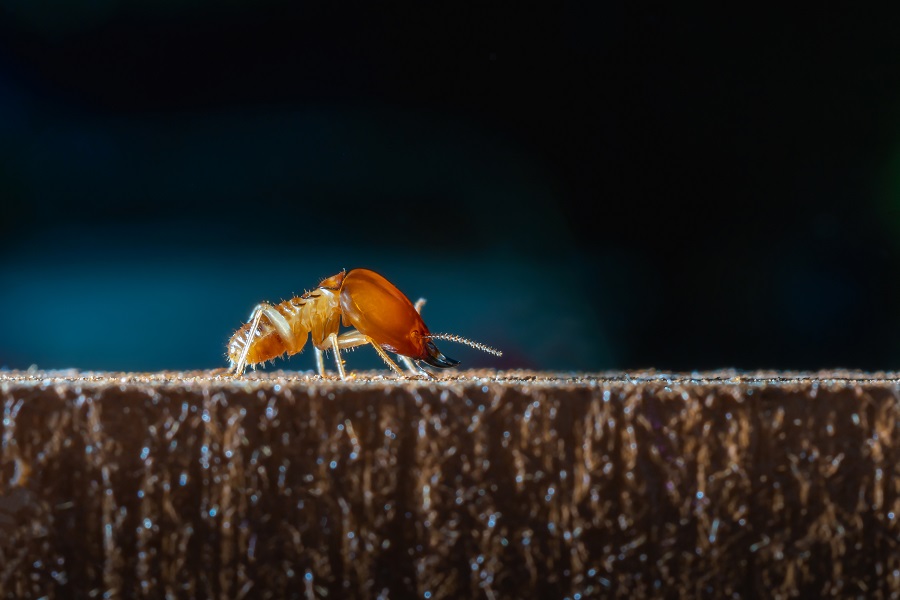San Jose Homeowners Guide to Termite Damage and Termite Control
 According to the recent survey, if you have been following the news, you would know that San Jose has earned the honor of being the second most at-risk city for termite infestations. If you have a house in San Jose, this might create some concern since termite damage and resulting Termite Treatment and repairs can get expensive. With the risk in mind, you could schedule regular Termite Inspection with a certified Termite Control Service company in advance.
According to the recent survey, if you have been following the news, you would know that San Jose has earned the honor of being the second most at-risk city for termite infestations. If you have a house in San Jose, this might create some concern since termite damage and resulting Termite Treatment and repairs can get expensive. With the risk in mind, you could schedule regular Termite Inspection with a certified Termite Control Service company in advance.
Termites have remained a problem for homeowners in all states of the United States except for Alaska. No one would like to experience the thrill of hunting after these little wood-munchers, and so, here is a guide on the basics of termite damage and tips for termite treatment and control. We hope this helps!
The know-how of finding the infestation
Subterranean termites are the most common types that affect the properties in the San Jose area. It is tough to spot a termite infestation until you are dedicatedly looking for it. The subterranean termites can enter your home in two ways, and either they fly into your property, or they tunnel their way inside.
Swarmers: These are the termites that fly into your home. These are reproductive females and males that intend to create a new nest. These termites have wings that they shed after finding a place to build their nest. If you are spotting a group of swarmers or dropped wings on your property, make sure to contact a Termite control service company.
Worker termites: These termites come into your property in search of food, and mind you, they are better tunnelers than Tommy Shelby. They can travel long distances in search of food, and once they find better conditions, they can create the main colony in your place. These termite infestations are hard to find, and you will have to look for mud tubes or termite droppings if you suspect termite activity.
Also Read: Can You Bring Termites with You When You Move?
Places to look for termite infestation
- Termites love dark and damp places since they despise the sun. Keep this in mind while you are looking for shelter tubes. Ensure to cover attics, basements, areas under the deck, and crawl spaces in your property while inspecting for termites.
- While checking for swarmer wings, check around your property where wooden things are present. Also, look through spider webs since the wings can be caught in them.
- Look through wood sources present around your yard like wood piles, logs, cardboards, tree stumps, and more. Inspect the soil around these wood sources by touching or cutting the ground.
What not to do when you find termite infestation?
When people find termite infestation in their home, the instinct would be to get rid of it immediately. Usually, people destroy the mud tubes and try out some DIY pest control methods like using orange oils, vinegar, pesticide, etc.
But almost all these methods are ineffective since it does not create any effect on the termite nest. With these DIY methods, you might get one or two termites or none at all. Sometimes the termite colony might relocate, making you go on a new hunt. There is also the danger of harmful chemicals in pesticides affecting you and your family. Hence it is better to avoid using these DIY Termite Treatment methods.
What to do when you find a termite infestation in your house?
The first thing you should do is leave the infested place as it is and then contact a Termite Control professional. These people are trained for the job, and they should confirm the infestation first. According to the severity and the location of the infestation, they would later suggest appropriate termite control measures. For example, if the infestation is localized, microwave technology would be a good choice, but fumigation services might be recommended if severe.
Termite prevention tips for San Jose homeowners
If you do not find any termite infestation in your San Jose home, take a relaxing breath and move on to the preventive measures that can reduce the risk of infestation.
- Dampness is an inviting factor for termites. Ensure to remove wooden furniture from humid places and immediately fix all the leaking plumbing.
- Wood and cellulose are the major sources of food for termites. You can limit the wood to soil contact near your home as much as possible.
- Store firewood at least 30 feet away from the exterior of your home, and make sure that the area is mostly dry.
- Remove unwanted wood and tree trunks from your property. Trimming the plants around your house periodically also helps.
- Make sure not to skip on your regular termite inspection schedule.
HiTech Termite Control
Found termites in your property? Let our experts handle it. We offer all kinds of Termite Treatment and repair services along with a three-year complete structure warranty for our primary and secondary treatments. Call us at (88) 322-8889 or visit our site at https://hitechtermite.com/.
- Feb 25, 2022
